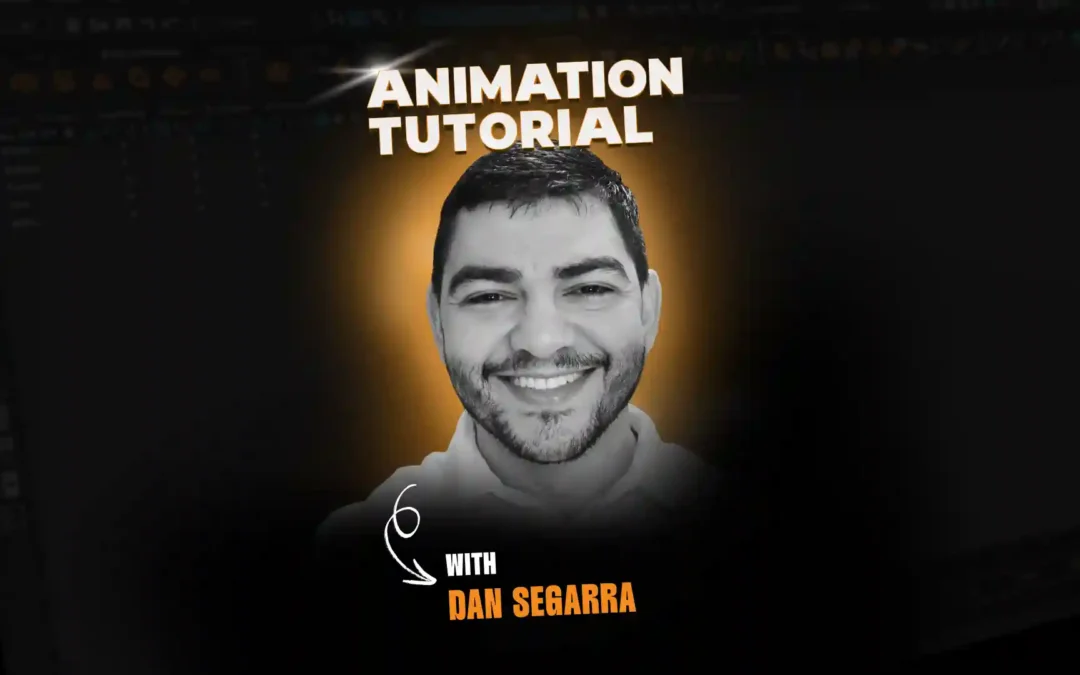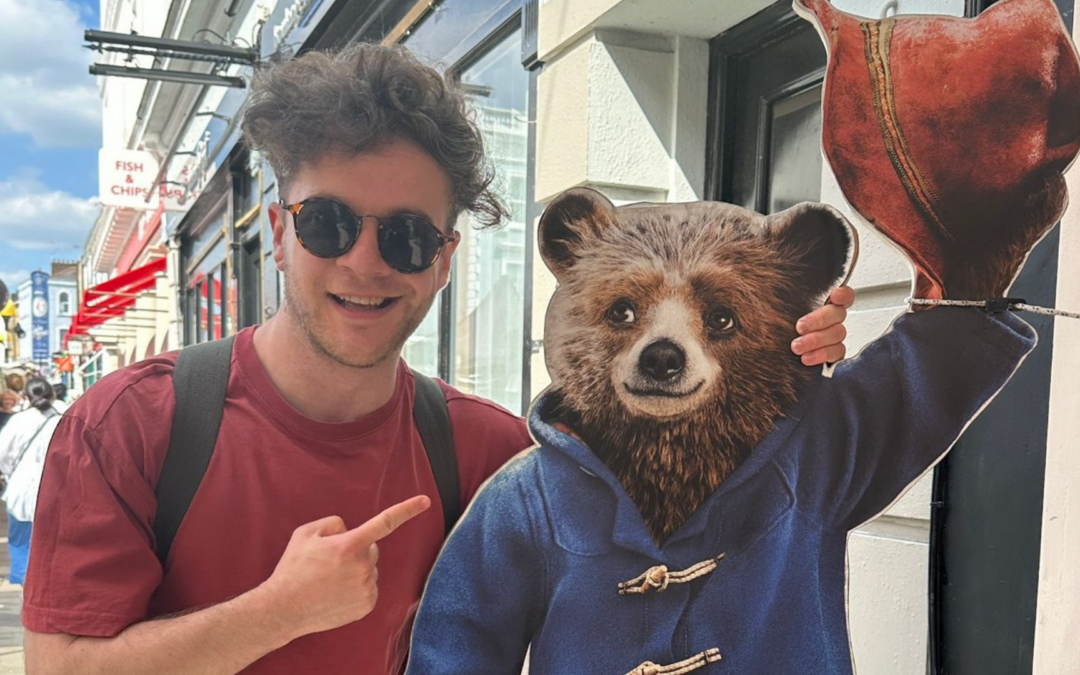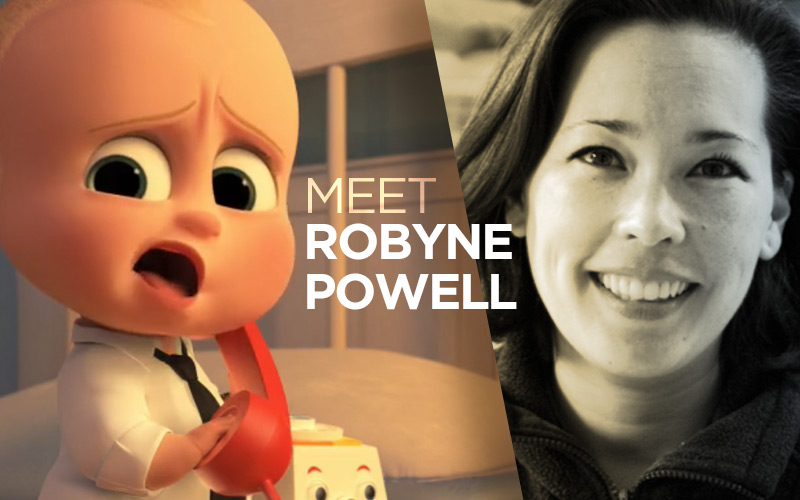
Mentor and DreamWorks animator Robyne Powell answered all our burning questions about 2D vs. 3D animation, how she tackled her most difficult shot, what a DreamWorks work day is like, and how she originally went to school for…zoology?
Animation Mentor: You originally studied zoology, so animation is quite a change! What made you decide to make the switch?
Robyne: I have always loved animals and still do—but I’ve also loved animation. I just never thought about animation as a career. When I studied zoology, I worked harder than I ever had and yet I was not passing. It was hard to see through the pressure of the rat race, but in hindsight, I came to realize that my heart really wasn’t in it. On the other hand, when I discovered animation as an option, I felt a drive that I can only describe as a true calling. I absorbed everything I was learning and it stuck. I couldn’t wait to learn more. I knew I had made the right choice.
AM: Does your knowledge of zoology help inform your creature shots? Seems like it would really help in analyzing reference.
Robyne: I only made it as far as embryology and basic physiology so I can’t attest to that, but I can say that my love of animals has helped. As I’m sure anyone who adores their pets can attest, you subconsciously study them—their mannerisms and body mechanics. Without realizing it, you’re observing and learning.
Robyne’s Demo Reel
AM: Tell us a little bit about working in 2D vs 3D animation. What are some of the unique challenges/rewards of each, and which is your favorite?
Robyne: I always love the tangibility of 2D that you just don’t get with 3D. With pencil and paper, you carve out your drawings through a series of lines and construction—it’s immediate and you can quickly get your ideas out and let them “flow”. There’s a “feeling” you get from a solid drawing that is unlike 3D.
3D, on the other hand, has a wonderfully amazing tool called “undo”. I will NEVER take it for granted! There’s also a control that you get with 3D animation that is much harder to achieve in 2D. By this I mean that in 3D, you have ownership of your shot from beginning to end from blocking, to spline, to polish. In 2D, your shot usually passes through multiple hands (assistants, clean-up artists, and inbetweeners) so you lose some of that control.
As for a favorite, I really couldn’t say. I love them both. It’s the animation that I love, so how I get there is less important.
AM: Walk us through a typical day at DreamWorks. You come in, you get your coffee, then what? 🙂
Robyne: My day at work actually starts on my commute into work. I always do a mental walkthrough of what I have scheduled that day and what personal goals I want to reach (ie. blocking one shot, spline a certain character, resolve a technical issue). But when I arrive at work, breakfast is first thing on the morning schedule! Once I get myself situated at my desk, I’m prepped to get going.
I open my shot and start tackling the items on my to-do lists.
Sometimes we have meetings for various things throughout the day, but as far as my workflow with my shots, we have 3 main stages of showing our work: blocking, spline, and final (polish).
The structure of most studios I’ve worked for is similar: there is a director in charge of the entire film, a head of the animation department or something similar, and supervisors of the sequence or of specific characters. Each of these positions are levels of approval that a shot must pass through, starting with the supervisor, then going to the Head of the Department, and then finally, showing the director.
Before starting on a shot, we have what is called a “launch”. This is done with the director, the Head of the Department, the specific supervisor assigned to that particular sequence, and, of course, the animator in attendance.
A launch is essentially the initial instruction and details of the shot, ie. any specific notes the director wants to see accomplished, character arcs, where and how it falls in the overall story and sequence etc. This is when we ask questions or get any clarification before beginning, and it allows all of us to get on the same page as to what’s needed to make the shot successful.
I then head to my desk to begin the planning of my shot. Sometimes this might take the form of reference, recording myself or others acting out the shot or researching the action or thumb nailing etc.
This first pass is called “blocking”. It is my rough “pitch” of my animation for how I see the shot animated. It’s important to put in enough information/keys to sell my idea without over-blocking and making it difficult to make adjustments if called for.
There is definitely something to be said about challenges, though—you certainly learn a LOT!
When I’m ready, I show my supervisor to get their feedback as a fresh set of eyes and to see if my ideas are working. A good supervisor is someone who works with you to make the shot the best it can be while you still retain a sense of ownership with your shot.
Once a supervisor is on board, I will sign up for HOCA (Head Of Character Animation) to get feedback if needed, and—if I’m ready—sign up for dailies with the director.
I then take my shot to the next level called “spline” while incorporating the director’s notes from the blocking pass. This phase is essentially adding all of the in-betweens and getting the shot to approximately 80% completion.
Again, I go through the process of showing the supervisor, HOCA, and finally the director.
Now comes the final phase. I begin the “polish” pass while addressing any notes the director had on the spline pass. Polish is going in and really fine tuning all the tiny details—for example, ensuring there is no geo penetration, overlapping fingers, making sure eyelashes aren’t crashing through eyelids, and tweaking the weight and timing of various parts, etc.
Once shots are approved and finaled, I will be assigned new shots and I start again.
AM: What’s the most challenging shot you’ve ever animated and how did you approach it?
Robyne: Ha! So many stories…so many learning opportunities. I’d have to say one of the “most challenging” was when I first started at Blue Sky. I was incredibly nervous, to say the least. I was surrounded by some of the most talented people in the industry and was fighting horrendously strong feelings of unworthiness. This only added to the challenges of my shot.
It was my very first shot at the studio and I wanted them to know they didn’t make a mistake in hiring me.
The character in my shot was of Diego, a four legged saber toothed tiger. I had never done a four legged character….perfect (insert sarcasm). Even when I think of it now, I can still remember that feeling of fear.
Diego was leaping from one falling rock to another falling rock and lunging toward the camera that was above him and pulling away. All of those falling rocks AND a swinging camera!!!
I was still trying to learn the tools at the studio and had to jump in using the parenting tools they had installed. Imagine parenting his body to one rock, each leg to the same rock, unparenting as he leaps, parenting again to new rocks and keeping him in line with the camera all while these rocks are falling away from the camera! I can still feel the sweat forming on my brow and the intense sickening feeling in my stomach.
Well I made a right royal mess of this shot. I don’t think anyone could have bunged it up more if they deliberately tried.
It was about 10 o’clock at night, and I thought I might be the only one left in the department but being so panicked, I didn’t want to leave until I had this shot under control.
I finally realized that I had to ask for help, or I’d be there till I died. I set on finding someone to help me and throw myself at their mercy. God was on my side that night as there was one fellow still there—Pete, I will never be able to repay you!!!
Yes, Pete P. was my hero that night. He was so kind and patient. He came over and cleaned up my shot and gave me a crash course in the parenting tool. He’ll never know how much he helped me.
There is definitely something to be said about challenges though—you certainly learn a LOT!
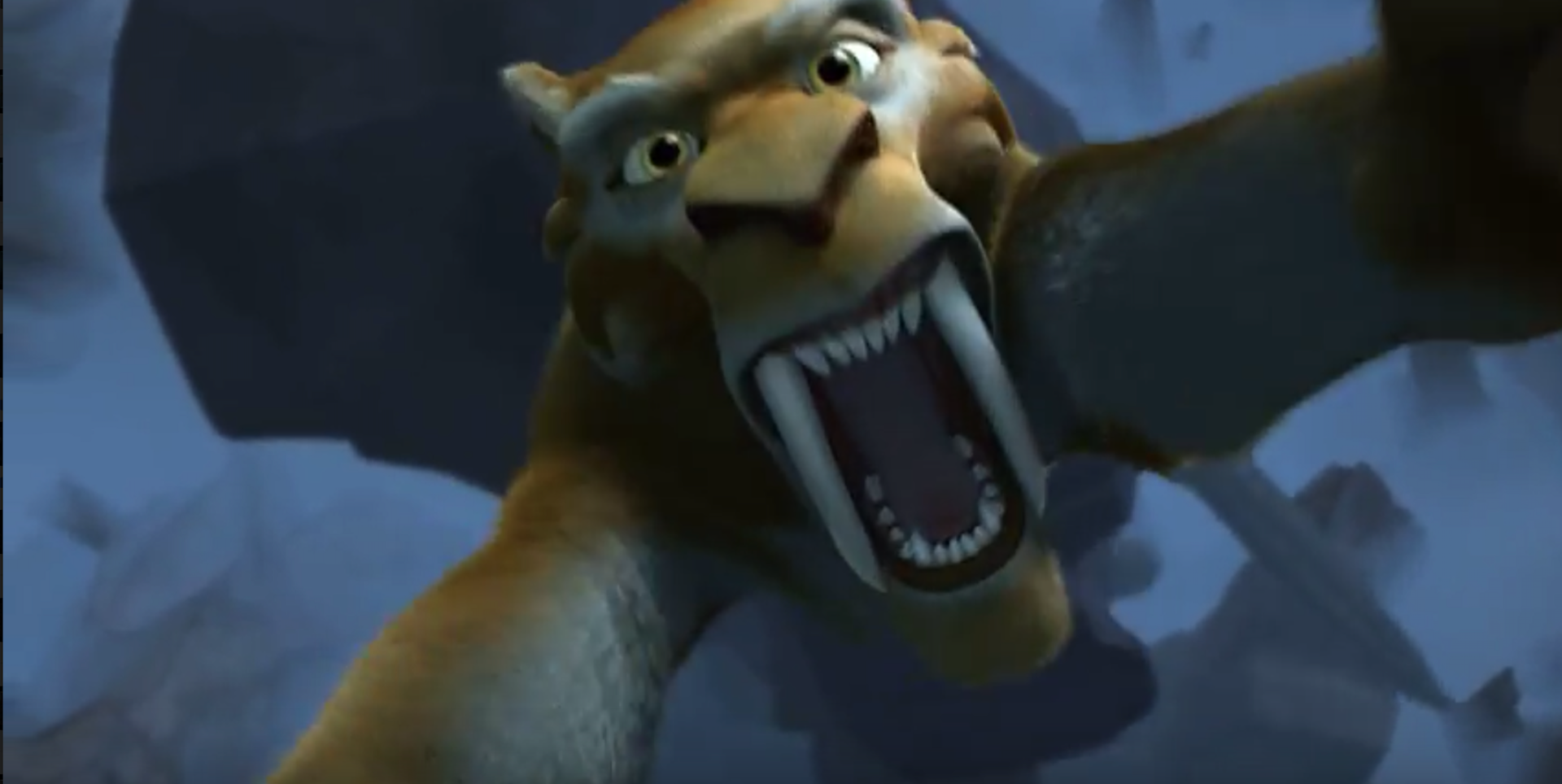
AM: What’s your favorite character you’ve ever animated and why?
Robyne: Oh, so many. I’ve always gravitated to the cute, pudgy characters but there’s also something really appealing and fun working with evil. Bad guys almost always have the most material to work with, and there’s so much potential. Gotta love the bad guy.
AM: If you could offer just one piece of advice to new animators, what would it be?
Robyne: Ah, this is easy. It’s something I tell my students all the time because it’s got to be one of THE most valuable tools in my tool belt and it really has nothing to do with actually animating.
I tell students to remember this time—when everything is new and exciting and when you look at your shot for the first time, all you see is the potential and the thrill of knowing that you’re going to create something that is you!
It’s this feeling that I revisit quite often. I look at my shots not as just another shot—I see potential. I see fun. I see the limitless possibilities of what I can do.
In every job, there are always downsides and challenges. Animation is no different. Sometimes it’s directly work-related. Sometimes, it’s personal. For example, there are times when technical issues or office politics can become the focus and get in the way of animating the shot to its full potential.
Sometimes, it’s completely personal—feelings of self doubt (still happens on a weekly basis! Sigh…), being so tired that I lose perspective, or being frustrated with my belief that my work is not good enough.
These things really can cloud our view and make whatever we’re doing a chore. It can be draining and demoralizing. When it gets like that, our work suffers. And that’s never a good thing.
Like I said, this is not unique to animation.
But whenever I feel like this, I take a break, close my eyes and recall what it was like when I was a student. I never saw challenging shots as difficult, never saw obstacles as impossible, never felt like I was not worthy because everything was new.
When I go to that place, I get the drive and excitement back. All of that other stuff fades in the background and I’m back to loving my job and having fun!
I look at my shots not as just another shot—I see potential. I see fun. I see the limitless possibilities of what I can do.
But it’s like a muscle, it has to be practiced and maintained – when you do that, you can call up those feelings on a moment’s notice, and it’s something I credit with my longevity and happiness.
I’ve seen many people who have lost that luster and enthusiasm, and it’s sad to see. They have the most amazing job, working with the most talented people, and they get to create every single day! But it takes perspective and time to sit back and focus on the reasons why they love animating. It really is the best job….well maybe besides working with kittens and puppies all day.
AM: How would you describe your teaching style?
Robyne: Hmmmm…I don’t know if what I have is a “teaching style” per say. It’s more like my personality and perspective that informs how I teach. Maybe that’s a style? I have no idea.
I am a very visual person and relate a lot of information through storytelling and examples.
I also truly believe that there are no stupid questions—if it’s a question you have, then it’s something you need to know. Hence negating the “stupid”. It’s important.
If we need to go over it multiple times, then that’s what we do. I never want anyone to feel uncomfortable asking questions or feel pressured to move forward when they don’t have the confidence to do so.
And I never look at a question and see it as a fault of the student. Instead, it means there’s a lapse in conveying the information. Not everyone learns the same way, so it’s our responsibility to bridge that gap.
So questions, questions, questions!! I love questions.
I also love the interaction with students, and I am most inspired when I feel like we’re working together. There’s a big difference between working “for” and working “with” someone. I get an energy from being involved rather than just speaking “at” people.
When I get energized from the students, it comes back around and I apply that to their class. I want them to be excited about what they’re doing and not be afraid to make mistakes. We all started somewhere and no one knows all…except maybe Glen Keane.
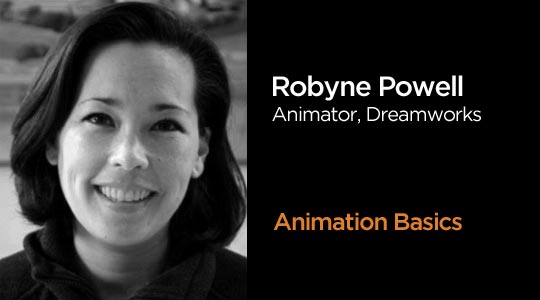
Want to learn from professional animators like Robyne?
Start your animation journey by learning with professional animators from a variety of studios and career paths! Get more information about Animation Mentor’s Character Animation Courses.
